Rotating machines are used for the conversion of mechanical energy into electrical energy or vice versa. All electrical machines whether motors or generators using direct or alternating current, depend for their actions on the principles of electromagnetic induction.
A Carbon Brush is a conductor serving to provide, at a rotating surface, electrical contact with a part moving relatively to the brush. In a generator or motor, the commutator rotates on a shaft and the fixed carbon brush rides on it to permit the flow of electricity and complete a circuit.
The size of the brush is defined by the dimension of the rectangular prism, that will contain the whole brush shape. The letter symbols ‘T’, ‘A’, and ‘R’ are used for the principal dimensions in such a way as to define the position of the brush on its collector.
‘T’ Means Tangential Circumferential Dimension
‘A’ Means Axial Dimension surface parallel to the axis of the collector
‘R’ Means Radial Distance to the collector. This is the surface reduced by the wear of the brush.
Our brushes can be custom engineered and manufactured to meet the requirements of your particular motor or generator. Finding the proper brush design for the operating conditions of your motor is the key to maximizing the life of the brush and contact surface. Poor brush selection can result in fast brush wear and damage to the contact surface. Techno Carbon’s engineers are industry-leading experts on sliding electrical contacts found in:
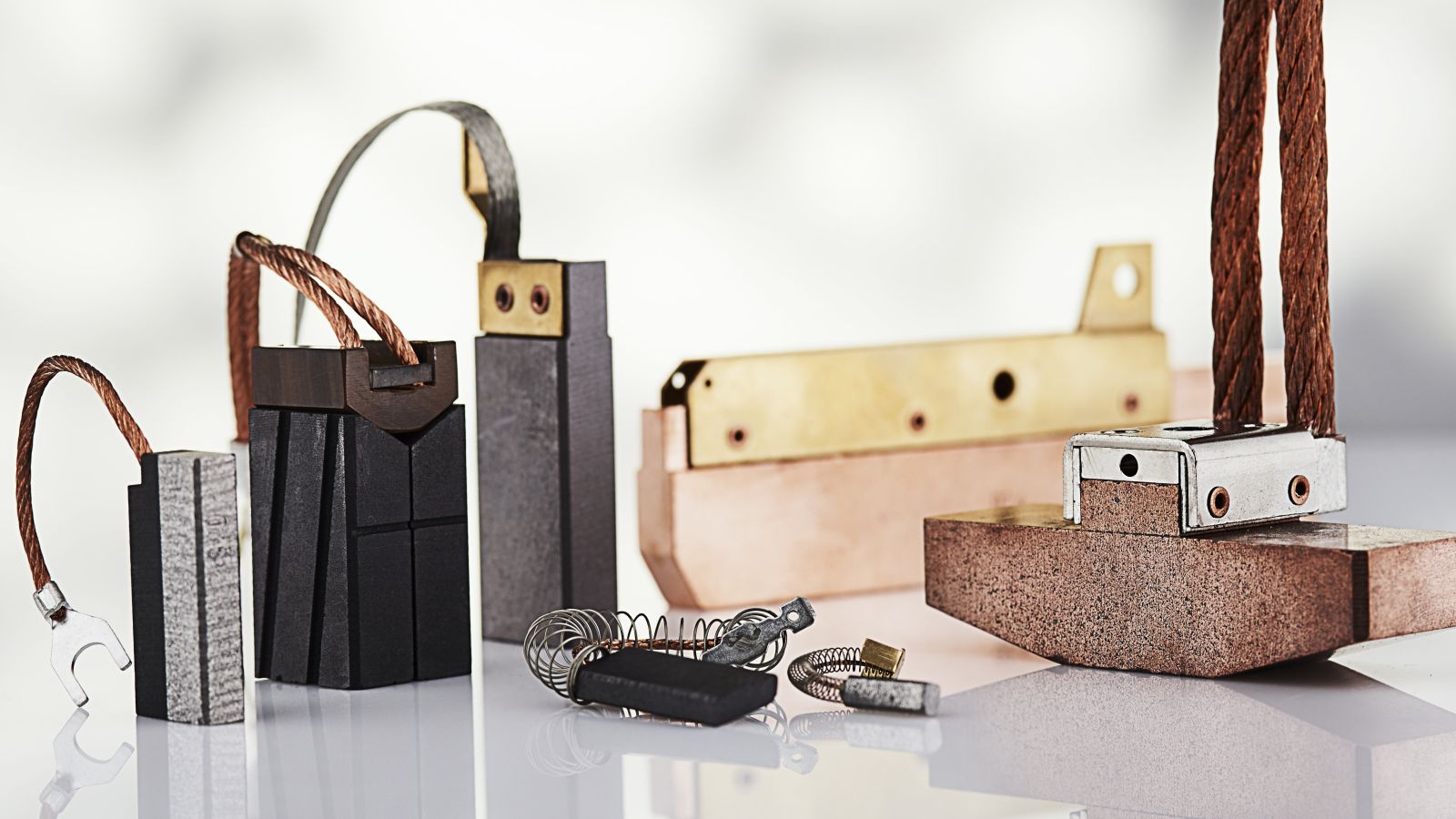
OUR MISSION
- Turbine Generator
- Wind Turbine
- Traction Generator
- DC Motor
- Synchronous Motor
- Hoist / Drag Generator
- AC Synchronous Motors
- Hydro Generator
- Traction Motor
- Ball Mill Motor
- Exciter
- Swing / Hoist Motor
- Induction Slip Ring Motors
- AC Generators
- Steam Turbine
- Traction Alternator
- Slipring Motor
- Synchronous Generators
- Swing Generator
- Fractional HP Motors
- Grounding Applications
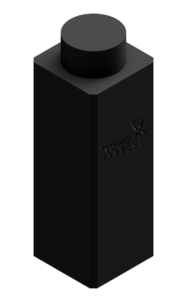
WIRELESS BRUSH
- Sometimes referred to as shunt/pigtail less brushes
- Commonly used in FHP motors, micro-motors, power tools, household appliances, or other small DC motors
- Cost-effective parts, manufactured by molding or press-to-size process
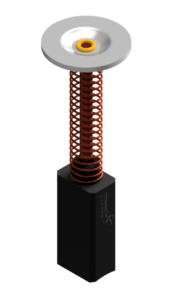
TAMPED WITH SPRING BRUSH
- Typically a smaller brush, with a tamped shunt surrounded by a spring coil and topped with a soldered cap
- Commonly used in FHP motors, medical imaging equipment, tachometers, aerospace, Bearing Protection Kit, power/signal/data transmission, and variable transformers (variac brush)
- Cost-effective parts manufactured by molding or press-to-size process
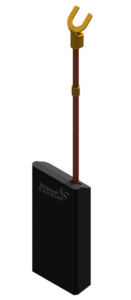
TAMPED SINGLE WIRE BRUSH
- A simple design, one wafer, one tamped shunt, one terminal.
- Commonly used in DC Motors & Generators, industrial, elevators, lift trucks or forklifts, grinders, FHP Motors and paper mills, variable transformers (variac brush)
- Precision machined by Techno Carbon through automation and master handiwork
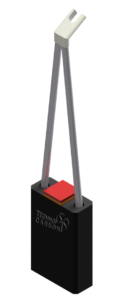
TAMPED MULTIPLE WIRES BRUSH
- A simple design: one wafer, two tamped shunts, one terminal
- Commonly used in DC motors, slips-rings, power generation, general industrial, elevator, FHP motor, and railroad
- Precision machined by Techno Carbon through automation and master handiwork
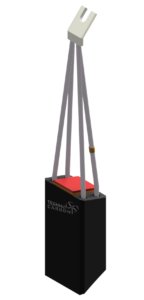
TAMPED MULTI-SECTION BRUSH
- Multi-wafer brushes are typically seen with 2 or 3 wafers and commonly connected to a single terminal. A Techno Carbon’s rubber top is also popular with multi-section brushes as it helps secure each wafer together, insulate the spring from carrying current, and absorbs excess vibration.
- Commonly used in slip-rings, general & heavy industrial, paper mill and railroad
- Precision machined by Techno Carbon through automation and master handiworK
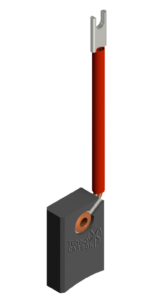
RIVETED SINGLE WIRE BRUSH
- Typically a single wafer brush, one shunt wire, and one terminal. Riveted for an extra secure brush-to-shunt connection and often will include a Techno Carbon’s Red Top or a hammer plate
- Commonly used in elevators, slip-rings, FHP motors, general & heavy industrial, paper mills, hydro or other power generation
- Precision machined by Techno Carbon through automation and master handiwork
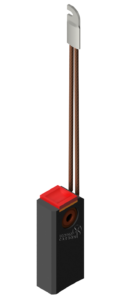
RIVETED MULTIPLE WIRE BRUSH
- Typically a single wafer brush, with 2 or more shunt wires, and one terminal. Riveted for an extra secure brush-to-shunt connection and often will include a Techno Carbon’s Rubber Top or a hammer plate
- Commonly used in elevators, slip-rings, FHP motors, general & heavy industrial, paper mills, hydro or other power generation
- Precision machined by Techno Carbon through automation and master handiwork
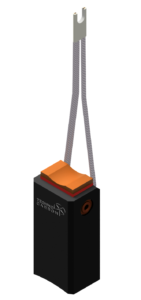
RIVETED MULTI-SECTION BRUSH
- Multi-wafer brushes are typically seen with 2 or 3 wafers and commonly connected to a single terminal. A Techno Carbon's Red Top is also popular with multi-section brushes as it helps secure each wafer together, insulate the spring from carrying current, and absorbs excess vibration
- Commonly used in elevators, slip-rings, general & heavy industrial, paper mill, and railroad
- Precision machined by Techno Carbon through automation and master handiwork
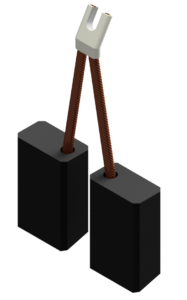
TAMPED PAIRED BRUSH
- Paired brush wafers with separate shunts, commonly connected by one terminal.
- Commonly used in slip rings, lift truck or forklifts
- Precision machined by Techno Carbon through automation and master handiwork
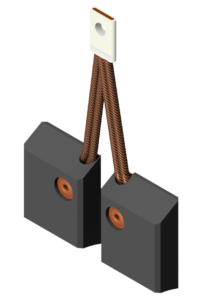
RIVETED SINGLE WIRE BRUSH
- Multi-wafer brushes are typically seen with 2 or 3 wafers and commonly connected to a single terminal. A Techno Carbon's Red Top is also popular with multi-section brushes as it helps secure each wafer together, insulate the spring from carrying current, and absorbs excess vibration
- Commonly used in elevators, slip-rings, general & heavy industrial, paper mill, and railroad
- Precision machined by Techno Carbon through automation and master handiwork
BRUSH GRADES TYPES
Carbon Graphite
Carbographitic materials are made from a mixture of coke and graphite powders, agglomerated with pitch or resin. This powder is molded into blocks which are baked at high temperatures to convert the binder into coke. These materials are not graphitized. Carbon graphite brushes are generally limited to lower current densities and are used on older, slower speed machines that reach maximum surface speeds of approximately 20.3 m/sec. The high friction generated with this type of material also makes it unattractive for present day use on commutators, but does have use as contacts and as a base for metal impregnated grades.
MAIN CHARACTERISTICS
Carbographitic brushes commutate well due to their high resistance and provide good polishing action, while maintaining moderate contact drop. As a result of their high temperature treatment, carbographitic brushes can withstand both high temperatures and variable loads.
MAIN APPLICATIONS
Machines with an older design, mostly characterized by a slow speed, lack of interpoles, generally operating at low voltage. Modern small machines, operating with permanent magnets, servomotors, and universal motors. Low-voltage battery-powered motors.
OPERATING LIMITATIONS
Current density in the brushes: 8 to 16 A/cm² (50 to 100 A/in²) depending on the application.
Maximum peripheral speed: 25 m/s (82 ft/s).
Electro Graphite
Electrographitic materials are carbographitic materials that are graphitized at temperatures in excess of 2,500°C in order to transform basic amorphous carbon into artificial graphite.
Main Characteristics
Electrographitic brushes are generally capable of continuous operation at 80 Amps/in² (12.4 Amps/cm²) and high peripheral speeds (≤ 50 m/s). Intermittent operation at higher values is not uncommon. They are widely used in the industrial, transportation, mining and aerospace industries on both AC and DC machinery.
Main Applications
All DC stationary or traction or some AC machinary in industrial, transportation, mining and aerospace industries machines operating with low, medium or high voltage and constant or variable loads. They are also found on AC synchronous and asynchronous slip ring applications.
Operating Limitations
Current density in the brushes:
- 8 to 12 A/cm2 (50 to 75 A/in²) under steady conditions.
- 20 to 25 A/cm2 (130 to 160 A/in²) for peak loads.
Maximum peripheral speed: 50 m/s (154 ft/s).
Natural Graphite
Natural graphite carbons are made from various graphites and carbons. Due to the mineral content, the good properties are combined with a slight grinding effect. The mica insulation of the collector must be recessed. The main ingredients are purified natural graphite and artificial graphite, mixed with additives, agglomerated with appropriate binders, and treated at a high temperature to carbonize the binder.
MAIN CHARACTERISTICS
LFC brushes have a low Shore hardness with excellent shock absorbing properties. This allows them to work in applications where other materials would fail. They excel at high peripheral speeds which amplify the mechanical stresses associated with friction, vibration, air flow, run out, and heat.
MAIN APPLICATIONS
Steel and stainless steel slip rings for synchronous machines.
OPERATING LIMITATIONS
Current density in the carbon brushes: 10 to 13 A/cm 2 (71 to 84 A/in 2 ).
Maximum peripheral speed: up to 90 m/s (295 ft/s).
Resin Bonded
Powdered natural or artificial graphite is mixed with a thermo-setting resin. The mix is then pressed and polymerized at a suitable temperature. These classes of material are identified with letters such as IM, RX & BG. The grades are based on Natural and/or Electro-Graphite material, mixed with artificial resin. This type of bond produces a high electrical resistance which endures the grades with extremely good commutating abilities combined with high contact drop & low friction. These materials are suited to small DC machines and Three Phase AC commutator motors.
We manufacture carbon brushes for major applications such as Wide range of Slip ring & Commutator Motors, Steel Industries, Mining Industries, Cement Mills, Crane Applications, Fork Lifts, Steam / Hydro Exciters, Generators & Motors for Paper Mills, Shipping, Wind Generation, Power Generators, Plastic Industries and all types of A.C and D.C Motors.
MAIN CHARACTERISTICS
Carbon brushes with high to very high electrical resistance, contact drop, electrical loss, and mechanical strength, which have very good commutating and cleaning properties. They can also work at very low current densities.
MAIN APPLICATIONS
AC Schrage-type commutator motors.
Medium-speed DC machines at medium voltage.
OPERATING LIMITATIONS
Resin-bonded grades should not be used at higher than rated current.
Admissible peripheral speed: 40 m/s (131 ft/s).
Metal Graphite
Metal Graphite carbon brush consists of a metal powder composition ranging from 4% to 98% metal ( Copper, plus metal alloys plus graphite ). These classes of brushes are applicable to low-voltage electrical machines with heavy loads and ordinary requirements of commutation. They are used on a variety of applications because of their low resistivity. Powdered natural or artificial graphite is mixed with a thermo-setting resin, copper powder, and/or other metal powders. The mix is then pressed and polymerized at a suitable temperature in an inert atmosphere.
MAIN CHARACTERISTICS
Dense to very dense carbon brushes with low friction and very low contact drop, therefore operating with very low losses and high currents.
MAIN APPLICATIONS
Low-speed, low voltage DC machines.
Medium-speed, highly-loaded AC asynchronous machines (wind turbine generators).
Medium-speed AC synchronous motors slip rings.
High current collection systems (electrolytic treatment lines, wire annealers, galvanizing lines…).
Low-voltage current collection (military, medical, paramedical, signal…).
Special machines, Slip ring assemblies in rotary joints.
OPERATING LIMITATIONS
Current density:
- 10 to 30 A/cm² (75 to 200 A/in²) under steady conditions.
- Up to 100 A/cm² (660 A/in²) for peak loads, depending on metal content.
Peripheral speed: Up to 35 m/s (115 ft/s), depending on metal content.
Silver Graphite
Silver graphite materials are produced from high-purity graphite and silver powder. The chemical resistance of silver has a particularly positive effect when used under various climatic conditions. Silver grades have a higher conductivity than copper grades and form a special low-resistance film due to the conductivity of silver oxide. Silver grades can also transfer low-voltage current signals without degradation.
Main Characteristics
The characteristics of our grades can be optimized for the task at hand by using various additional treatments. Depending on the type of impregnation the carbon brushes can be adjusted to have a lower friction coefficient, a higher flexural strength, or a lower spark formation tendency.
Main Application
Signal current transmission (thermocouples, thermometric sensors, regulation...).
Pulse transmission to rotating devices (radar, prospection..).
Tachometer generators.
Aerospace and space applications.
Shaft grounding in a dual-grade construction.
High conductivity/Low resistivity.
Accurate signal/power/data transfer.
Good thermal performance,
Oxidation & chemical resistance.
Low wear rate, increasing contact life.
Low coefficient of friction, Non-welding.
Operating Limitation
Current density up to 50 A/cm 2 (440 A/in 2 ).
Peripheral speed: up to 25 m/s (82 ft/s).